Southern Arizona's diverse microclimates and terroirs significantly influence the unique characteristics of locally produced wines. Winemakers leverage these variations in geography, soil, and climate to select suitable grape varieties, apply precise techniques, and determine optimal harvest times, resulting in high-quality, terroir-driven wines. The region's wide range of microclimates allows for the cultivation of diverse grape styles, from crisp white wines in cooler elevations to rich red wines in warmer regions. This, in turn, offers southern AZ wineries a distinct edge on the market while promoting sustainable water management practices and community engagement through tourism and education initiatives.
Discover the enchanting world of microclimate-driven wines in Southern Arizona, where diverse terroirs shape unique flavors. From the sun-kissed slopes to the cool mountain valleys, this region’s winemakers craft exquisite varietals that reflect their specific microclimates. Join us as we explore the intricate relationship between climate, soil, and grape varieties, uncovering the distinct characteristics that make Southern AZ wineries a must-visit destination for wine enthusiasts seeking exceptional bottles.
- Understanding Microclimates and Their Impact on Wine Terroir in Southern Arizona
- The Diverse Terroirs of Southern AZ Wineries: A Geographical Perspective
- Grape Varieties and Their Behavior in Different Climate Conditions
- Tasting Notes: Uncovering Unique Flavors from Southern AZ Microclimates
- Sustainable Practices and Water Management in the Region's Wine Industry
- Exploring Tourism and Education Opportunities for Southern AZ Winemakers
Understanding Microclimates and Their Impact on Wine Terroir in Southern Arizona
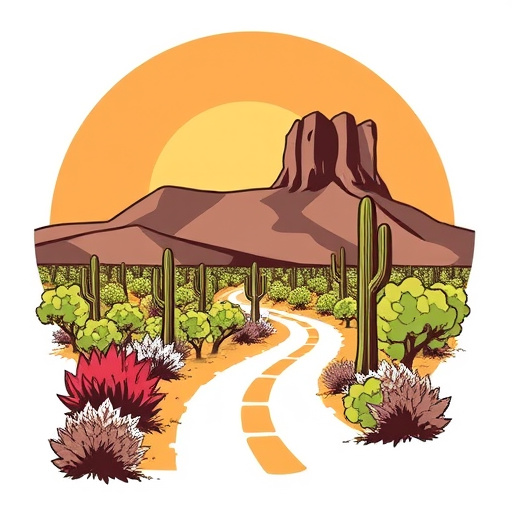
In southern Arizona, the concept of microclimate plays a pivotal role in shaping the unique characteristics of wine produced across diverse terroirs. Terroir, a French term referring to the combination of geography, soil, and climate that influences grape growing and winemaking, is particularly nuanced in this region due to its varied microclimates. Each microclimate creates distinct conditions for grapevines, affecting factors such as temperature, sunlight exposure, and moisture levels. These variations result in wines with notable differences in flavor profiles, acidity, and alcohol content. Understanding these microclimates is essential for southern AZ wineries aiming to produce high-quality, distinctive wines that capture the essence of their specific growing regions.
The impact of microclimates on wine terroir in southern Arizona is evident in the wide range of grape varieties that thrive here. From the cooler elevations of the Santa Catalina Mountains to the warmer, drier valleys, different microclimates foster the growth of diverse grape types, contributing to a rich and varied wine industry. Winemakers in these regions must carefully consider the specific microclimate characteristics of their vineyards to make informed decisions about grape variety selection, pruning techniques, and harvest timing, ultimately shaping the unique flavors and aromas that define their wines.
The Diverse Terroirs of Southern AZ Wineries: A Geographical Perspective
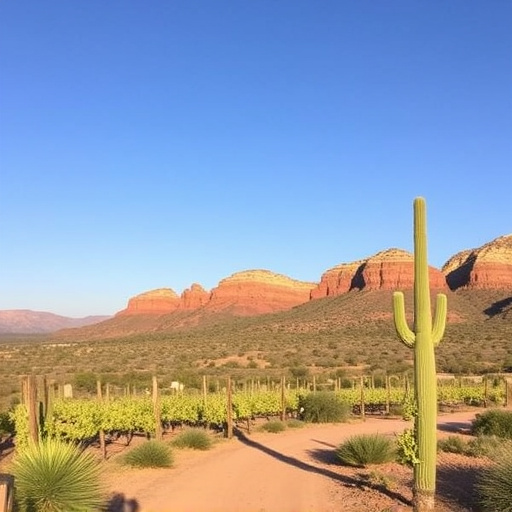
Southern Arizona’s wineries are nestled in a diverse range of terroirs, each offering unique microclimates that shape the characteristics of their wines. The state’s geographical variety, from high-altitude desert peaks to lower-lying valleys, results in distinct growing conditions for grapes. These terroirs play a crucial role in defining the flavor profiles and styles of Arizona wines.
For instance, wineries located in the cooler, higher elevations of the Santa Catalina Mountains benefit from milder temperatures and increased sunlight, producing crisp, bright white wines with vibrant acidity. In contrast, those in lower regions like the Sonoran Desert experience hotter days and cooler nights, ideal for robust red varieties that ripen slowly, yielding rich, full-bodied wines with concentrated flavors. This geographical perspective highlights how southern AZ wineries leverage their unique terroirs to craft a wide array of distinct and high-quality wine styles.
Grape Varieties and Their Behavior in Different Climate Conditions
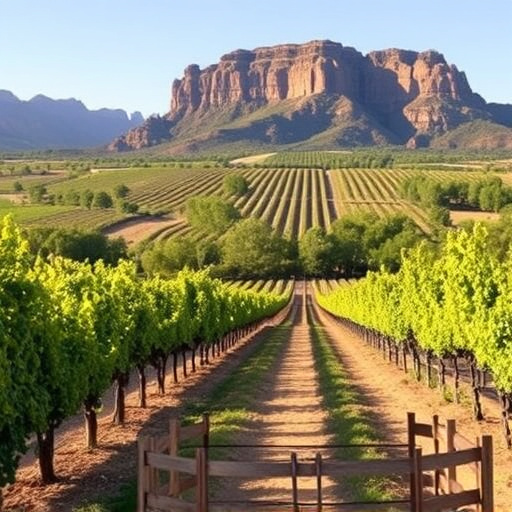
Southern Arizona’s diverse terroirs offer a unique playground for grape varieties, allowing winemakers to explore distinct flavors and styles. The state’s microclimates, shaped by elevation, topography, and nearby bodies of water, create conditions that can dramatically influence how grapes ripen and accumulate flavor compounds. For instance, the warmer, sunnier valleys tend to produce fuller-bodied reds like Syrah and Grenache with richer tannins and deeper color, while cooler, higher elevations favor lighter, more crisp whites such as Viognier and Riesling, known for their vibrant acidity.
This climate variability encourages winemakers in southern AZ wineries to experiment with different grape varieties, each exhibiting unique behaviors in response to the local conditions. Some grapes thrive in hotter, drier spots, developing intense flavors and aromas, while others flourish in cooler, moist areas, resulting in more delicate and nuanced wines. This interplay between terroir and grape variety contributes to the region’s growing reputation for producing distinctive, high-quality wines that showcase both their regional character and the specific traits of each varietal.
Tasting Notes: Uncovering Unique Flavors from Southern AZ Microclimates
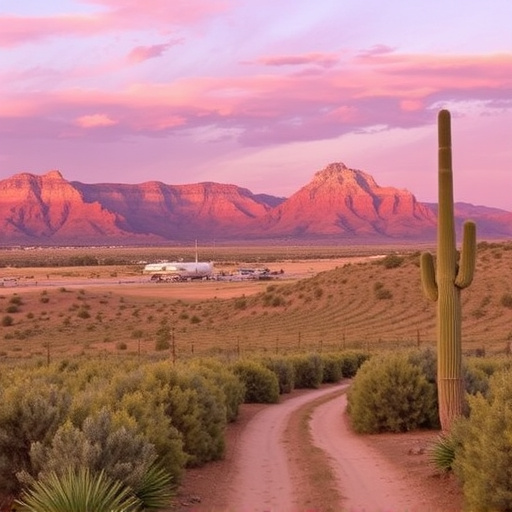
Tasting Notes: Unveiling Distinct Flavors from Southern AZ Microclimates
The diverse terroirs of southern Arizona offer a unique playing field for winemakers, resulting in wines that showcase distinct characteristics driven by microclimate variations. Each region brings its own set of environmental factors—from elevation and sunlight exposure to soil composition and temperature fluctuations—that intricately shape the flavors of the grapes grown there. This, in turn, translates into a captivating range of wine styles and sensory experiences for enthusiasts.
When tasting these microclimate-driven wines, one might notice subtle yet pronounced differences. For instance, southern AZ wineries nestled in higher elevations often produce lighter, more crisp whites with bright citrus notes and a refreshing acidity. Conversely, the warmer, lower-lying areas favor fuller-bodied reds with robust fruit flavors, such as juicy berries and spicy hints. These nuanced variations make exploring southern Arizona’s wine country an exhilarating journey for both producers and sommeliers alike.
Sustainable Practices and Water Management in the Region's Wine Industry
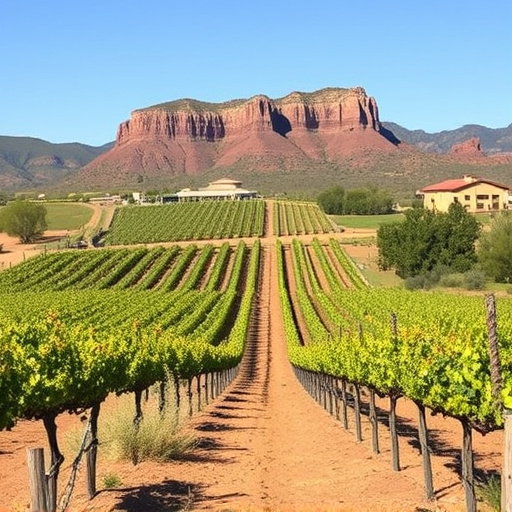
The wine industry in southern Arizona has embraced sustainable practices, recognizing the region’s unique microclimates and terroirs as precious resources. Winemakers are implementing eco-friendly water management strategies to conserve this vital resource, especially given the semi-arid conditions. One notable approach is the use of drip irrigation systems, which deliver water directly to each vine, minimizing waste and ensuring optimal hydration. This method allows for precise control over water usage, enabling producers to adapt to varying rainfall patterns and maintain healthy grapevines.
Additionally, many southern AZ wineries are utilizing reclaimed water sources and implementing water-saving technologies in their operations. These practices not only contribute to the industry’s sustainability but also enhance the overall environmental health of the region. By prioritizing responsible water management, these wineries are able to produce high-quality, microclimate-driven wines that reflect the distinct characteristics of each terroir while preserving the beautiful landscapes for future generations.
Exploring Tourism and Education Opportunities for Southern AZ Winemakers
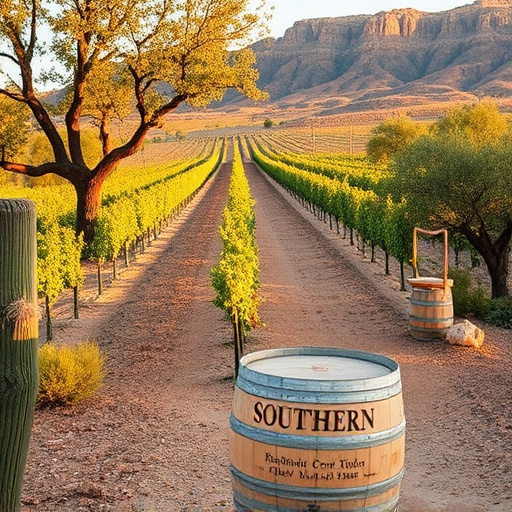
Exploring tourism and education opportunities for southern AZ winemakers opens a world of potential for this burgeoning industry. As microclimate-driven wines gain recognition, showcasing the unique terroirs of southern Arizona becomes a compelling draw for wine enthusiasts. By promoting their distinctive flavors and storytelling behind each bottle, local wineries can attract visitors seeking authentic experiences. Offering tours, tastings, and educational workshops not only generates revenue but also fosters community engagement and appreciation for the art of viticulture in this diverse region.
Southern AZ wineries have a unique chance to educate both locals and tourists about the science and history intertwined with their craft. Through partnerships with local schools, universities, and tourism boards, winemakers can develop programs that highlight sustainable farming practices, soil science, and the impact of climate on wine quality. These educational initiatives position southern Arizona as a destination for wine knowledge and cultural immersion, further solidifying its place in the global wine scene while nurturing local economic growth.
Southern Arizona’s diverse microclimates have fostered a unique wine terroir, enabling its wineries to produce distinct, high-quality grapes. By understanding the impact of geographical features and climate conditions, winemakers can continue to innovate and showcase the region’s potential. The sustainable practices and water management strategies implemented by these southern AZ wineries ensure longevity while attracting tourists and educating the public about this remarkable wine culture. Exploring these microclimates has not only revolutionized the local industry but also positions southern AZ as a prominent player on the global wine stage.
